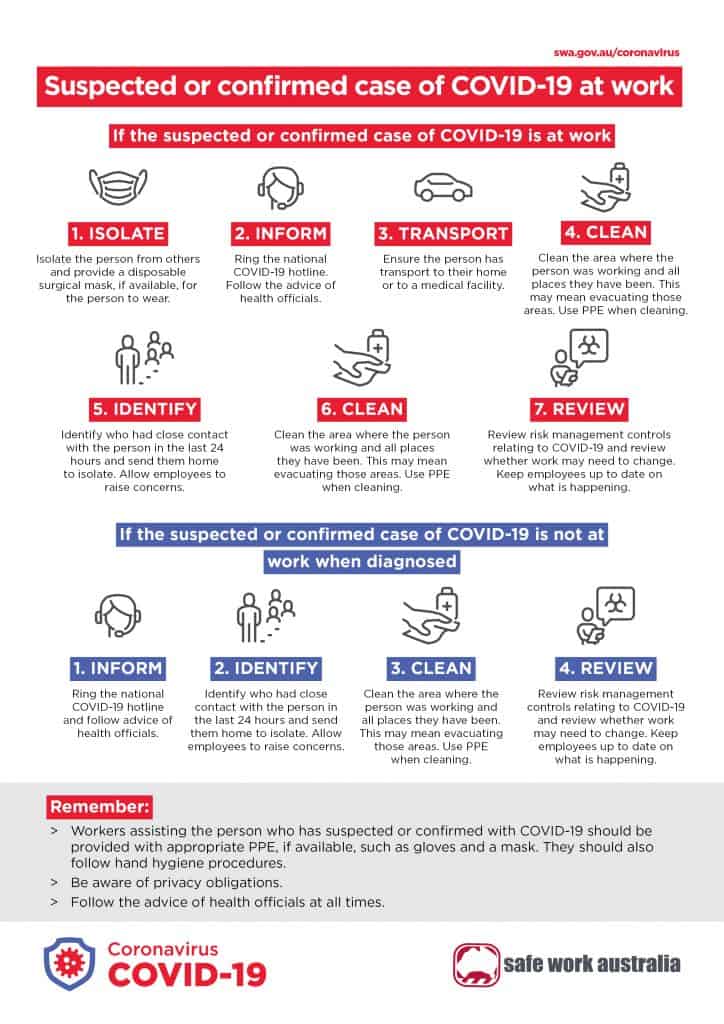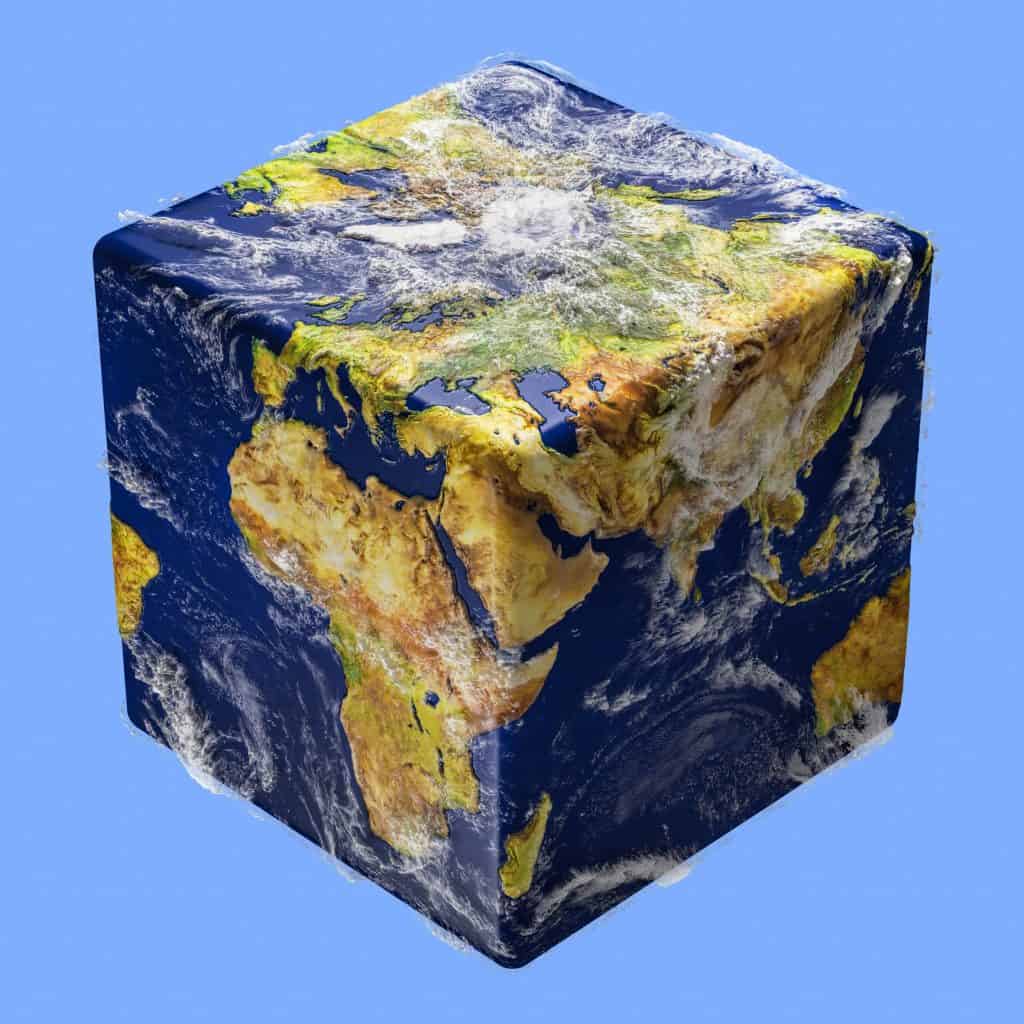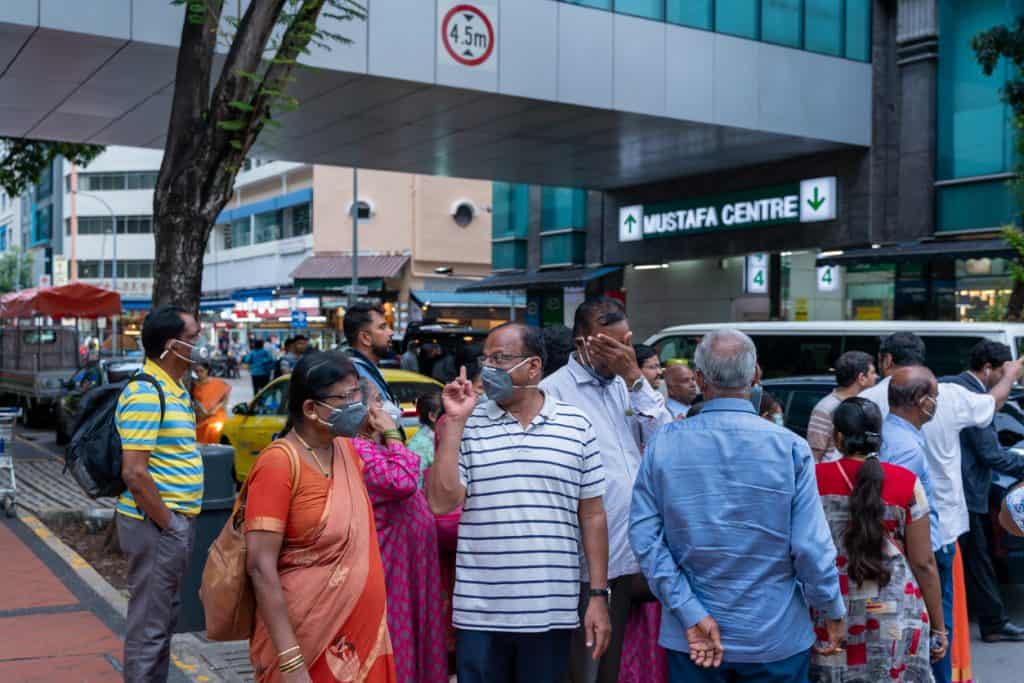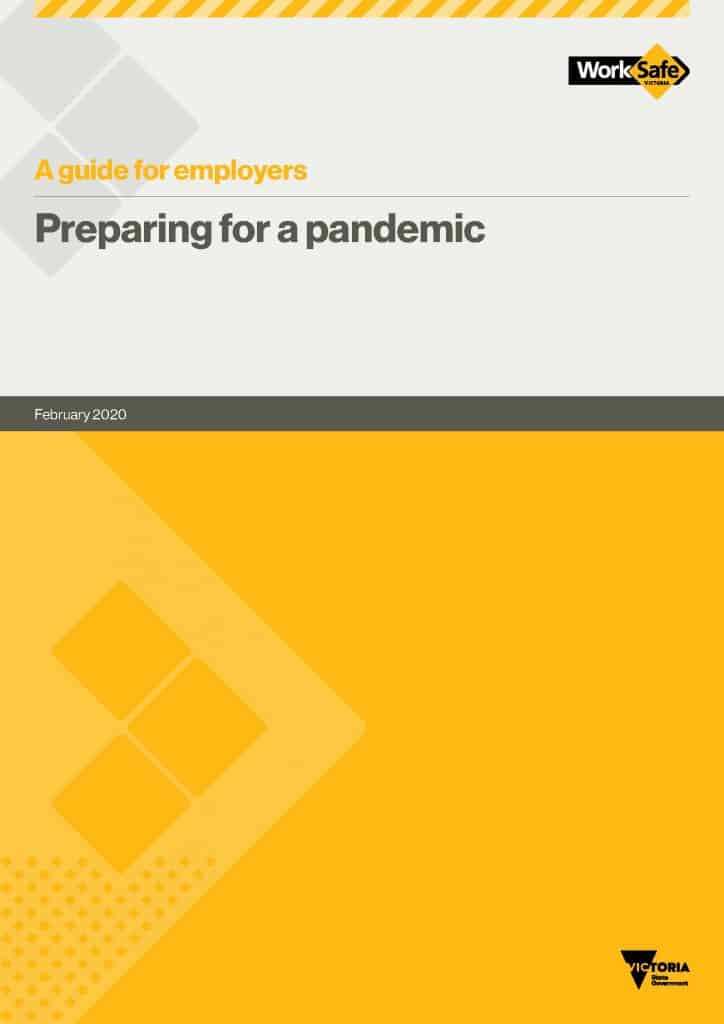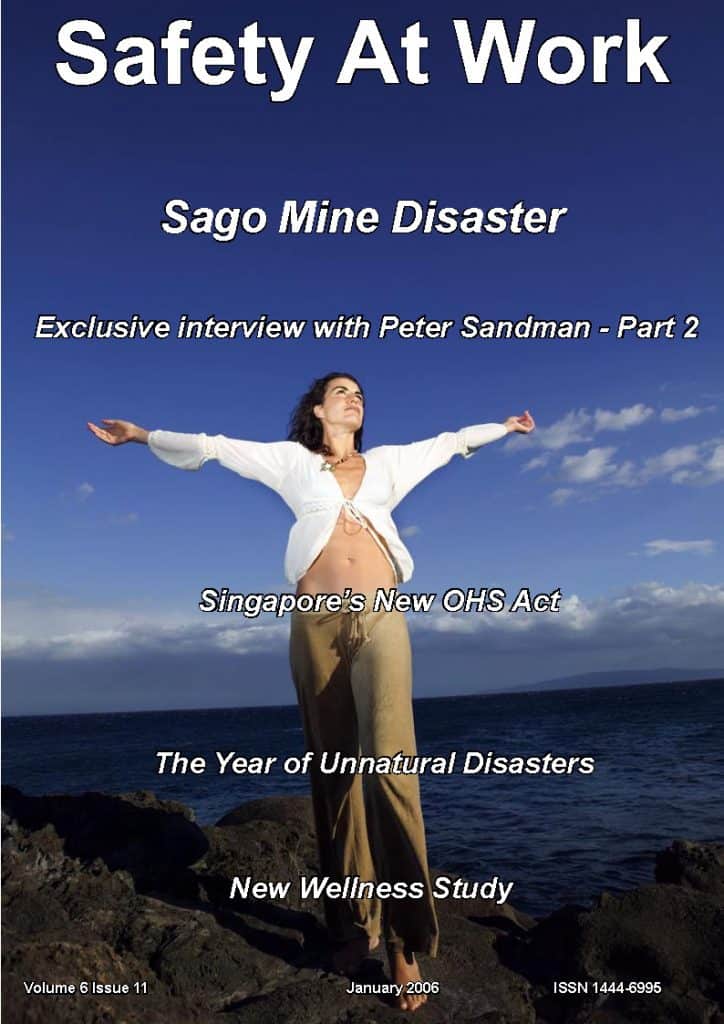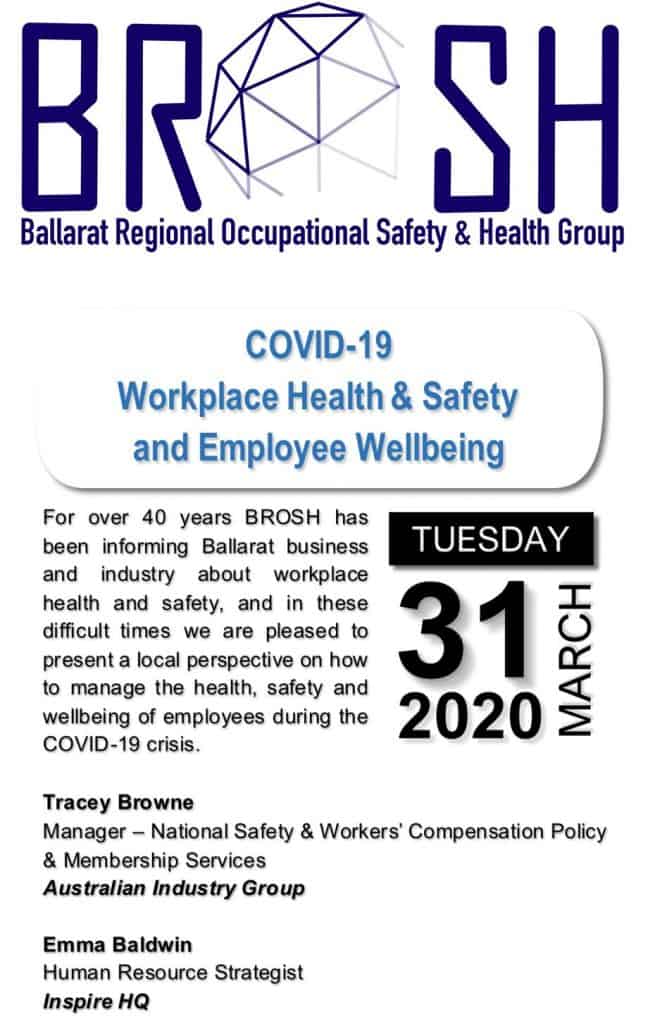
The Ballarat Regional Occupational Safety and Health (BROSH) group conducted an online seminar on March 31, 2002 at which Tracey Browne of the Australian Industry Group (AIGroup) spoke. The content was very good, and the format worked even though many people are still trying to acclimatise to online meetings and the muting of microphones.
Browne provided a general update on managing occupational health and safety (OHS) during the COVID19 pandemic disruption but there were a couple of notable contributions.

